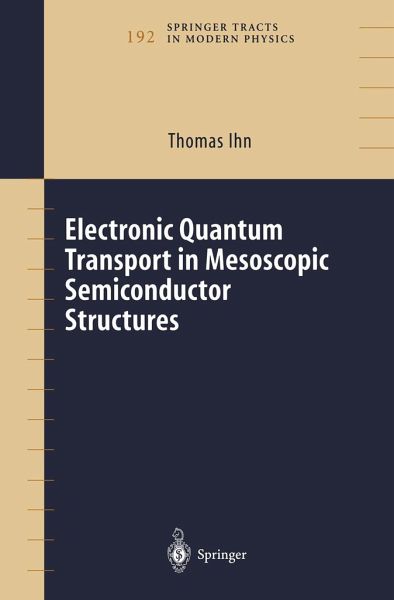Nicht lieferbar

Electronic Quantum Transport in Mesoscopic Semiconductor Structures
The physics of semiconductors has seen an enormous evolution within the last ?fty years. Countless achievements have been made in scienti?c research and device applications have revolutionized everyday life. We have learned how to customize materials in order to tailor their optical as well as electronic properties. The on- ing trend toward device miniaturization has been the driving force on the appli- tion side and it has fertilized fundamental research. Nowadays, advanced processing techniques allow the fabrication of sub-micron semiconductor structures in many university research laborator...
The physics of semiconductors has seen an enormous evolution within the last ?fty years. Countless achievements have been made in scienti?c research and device applications have revolutionized everyday life. We have learned how to customize materials in order to tailor their optical as well as electronic properties. The on- ing trend toward device miniaturization has been the driving force on the appli- tion side and it has fertilized fundamental research. Nowadays, advanced processing techniques allow the fabrication of sub-micron semiconductor structures in many university research laboratories. At the same time, experiments down to millikelvin temperatures allow researchers to anticipate the observation of quantum phenomena, so far hidden at room temperature by the large thermal energy and strong dephasing. The ?eld of mesoscopic physics deals with systems under experimental con- tions where several quantum length scales for electrons such as system size and phase coherence length, or phase coherence length and elastic mean free path, are compa- ble. Intense research over the last twenty years has revealed an enormous richness of quantum effects in mesoscopic semiconductor physics, which is typically charact- ized by an interplay of quantum interference and many-body interactions. The most famous phenomena are probably the integer and fractional quantum Hall effects, the quantization of conductance through a quantum point contact, the Aharonov-Bohm effect, and single-electron charging of quantum dots.




